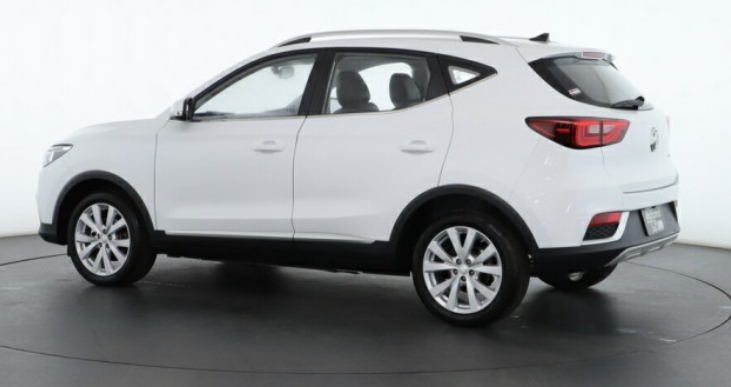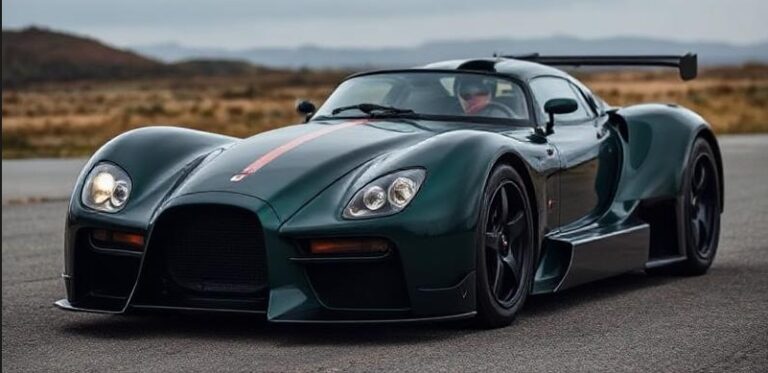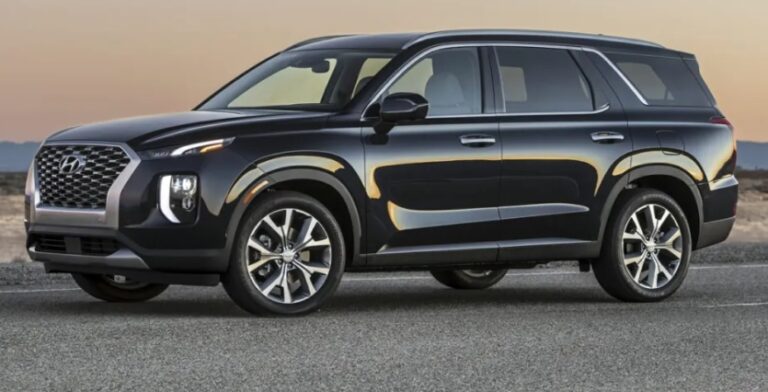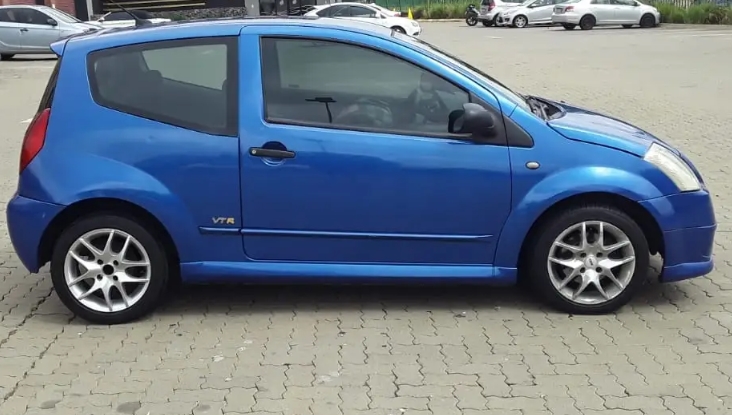From Joint Venture to Family Flagship: The Evolution of the Ford Galaxy
In the landscape of the modern family car, few nameplates evoke the same sense of space, practicality, and dependability as the Ford Galaxy. For nearly three decades, it served as a benchmark in the Multi-Purpose Vehicle (MPV) segment, transporting countless families on school runs, holidays, and everyday adventures. But the Galaxy’s story is more than just one of a large, practical car; it’s a tale of strategic alliances, evolving design philosophies, and an adaptation to a market that would eventually render its very existence obsolete. This is the comprehensive history of the Ford Galaxy, from its shared German origins to its final, sophisticated form.
The First Generation (Mk1): The AutoEuropa Alliance (1995-2006)
The story of the Ford Galaxy begins not in a Ford design studio, but with a pragmatic and ambitious joint venture. In the early 1990s, Ford of Europe identified a gaping hole in its lineup. The MPV market, kickstarted by the Renault Espace, was booming, and Ford had no direct competitor. Developing an entirely new platform from scratch was a costly and time-consuming prospect. Simultaneously, Volkswagen was facing the same dilemma. The solution was the “AutoEuropa” project, a 50/50 joint venture between the two automotive giants.
Established in Palmela, Portugal, the AutoEuropa plant was designed to produce a trio of platform-sharing MPVs: the Ford Galaxy, the Volkswagen Sharan, and the SEAT Alhambra. Launched in 1995, the Ford Galaxy Mk1 was, for all intents and purposes, a masterclass in badge engineering. While it featured a Ford-specific grille, headlights, and the iconic Blue Oval badge, its underpinnings, drivetrain options, and much of its interior were pure Volkswagen.
Pre-Facelift (1995-2000)
The initial Galaxy was praised for its cavernous interior, offering genuine seating for seven adults. The rear five seats were individual, removable, and configurable, offering a level of versatility that estate cars of the era simply couldn’t match. However, this flexibility came with a caveat: the seats were incredibly heavy and had to be stored outside the vehicle when not in use.
The trim levels offered a clear hierarchy for buyers:
- Aspen: The entry-level model, offering the basics such as power steering and a driver’s airbag, but often lacking features like air conditioning or electric windows.
- GLX: The mid-range workhorse. This was the volume seller, adding features like electric front windows, central locking, and often air conditioning as an option or standard.
- Ghia: The premium trim. This top-tier model included air conditioning, alloy wheels, velour upholstery, wood-effect dashboard trim, and a host of other comfort and convenience features. Special editions like the “Si” offered a sportier flavor with unique alloys and trim.
The engine lineup was a blend of Ford and Volkswagen powerplants:
- Petrol: A 2.0-litre 8v Ford DOHC four-cylinder was the entry point, followed by a more powerful 2.3-litre 16v DOHC unit introduced in 1997. The flagship engine, however, was Volkswagen’s highly regarded 2.8-litre VR6, giving the Galaxy impressive (for its size) performance.
- Diesel: The undisputed star of the range was Volkswagen’s 1.9-litre TDI engine. Initially available with 90 PS, it was lauded for its exceptional fuel economy and strong torque, making it the default choice for high-mileage families. A 110 PS version was later added for more performance.
The Facelift (2000-2006)
In 2000, the Galaxy received a major facelift that went a long way in establishing its own identity. This update coincided with Ford’s “New Edge” design language, seen on the Focus and Ka. The Galaxy adopted sharper, triangular headlights, a new trapezoidal grille, and a completely redesigned interior. Crucially, the dashboard was now unique to Ford, moving away from the shared VW design and giving the cabin a more modern, driver-focused feel.
The trim levels were also revised to align with Ford’s contemporary European lineup:
- LX: Replaced the Aspen as the base model.
- Zetec: Replaced the GLX, offering a slightly sportier feel with more equipment as standard.
- Ghia: Remained the pinnacle of luxury, now with even more standard equipment and plusher materials.
Engine technology also moved forward. The VW-sourced 1.9-litre TDI engines were updated with “Pumpe Düse” (PD) technology, boosting power to 115 PS, 130 PS, and eventually a potent 150 PS, solidifying the diesel’s dominance in the sales charts. The 2.8 VR6 engine was also updated to a 24-valve configuration.
.
THIS is GOOD stuff if your car is in need:

.
The Second Generation (Mk2): Forging a Ford Identity (2006-2015)
By the mid-2000s, the AutoEuropa partnership had run its course. Ford sold its stake in the venture to Volkswagen and set about creating a Galaxy that was, for the first time, entirely its own. Launched in 2006, the second-generation Galaxy was a revelation. Designed alongside its sportier sibling, the S-MAX, it was based on the acclaimed EUCD platform that also underpinned the Mondeo and Volvo S80.
This new platform transformed the Galaxy’s driving dynamics. Where the original felt competent but van-like, the Mk2 drove with the poise and comfort of a well-sorted saloon car. The design language was pure Ford “Kinetic Design,” characterized by bold wheel arches, a dynamic stance, and swept-back headlights. It looked sleeker, more modern, and far more sophisticated than its predecessor.
The true masterstroke, however, was inside. Ford introduced the “FoldFlatSystem.” This ingenious mechanism allowed both the second and third rows of seats to fold completely flat into the floor at the pull of a lever. This eliminated the back-breaking chore of removing heavy seats and provided a perfectly level, van-like load bay. It was a game-changing innovation that immediately made rivals seem outdated.
The trim level structure was familiar to Ford customers:
- LX: The entry point (later renamed Edge).
- Zetec: The core model, offering a good balance of equipment, including alloy wheels and improved interior trim.
- Ghia: The traditional luxury model, featuring chrome detailing, automatic climate control, and cruise control.
- Titanium: Introduced as a new, modern flagship trim, sitting alongside or above the Ghia. It offered a “techno-luxury” feel with larger alloys, partial leather trim, and advanced features like the Ford “Convers+” digital instrument cluster.
- Titanium X: An even higher specification, adding features like a full leather interior, panoramic roof, and xenon headlights.
The engine lineup was now exclusively Ford:
- Petrol: The range included a 2.0-litre Duratec and a 2.3-litre automatic-only option. Later in the cycle, Ford’s revolutionary EcoBoost turbocharged engines were introduced, including a powerful 2.0-litre with over 200 PS.
- Diesel: The Duratorq TDCi diesel engines were the heart of the range. Initially offered in 1.8-litre and 2.0-litre displacements, these were later joined by a powerful 2.2-litre TDCi, offering effortless motorway cruising performance.
A facelift in 2010 brought subtle exterior revisions, a more refined interior, and updated, more efficient Euro 5-compliant engines, including the introduction of Ford’s PowerShift dual-clutch automatic gearbox.
The Third Generation (Mk3): The Premium Evolution (2015-2023)
The third and final generation of the Ford Galaxy, launched in 2015, represented a significant step upmarket. While still based on the same platform as the Mondeo Mk5 and S-MAX, it was heavily re-engineered for greater refinement, comfort, and technological integration.
The exterior design adopted Ford’s new global face, dominated by a large, Aston Martin-esque trapezoidal grille and slimmer, more technical headlights. The overall look was less utilitarian and more akin to a premium executive shuttle. This generation prioritized ride comfort above all else, featuring a sophisticated integral link rear suspension that smoothed out road imperfections exceptionally well.
Inside, the cabin was a technological leap forward. The analogue dials were replaced by a large digital instrument cluster, and the dashboard was centered around the Ford SYNC 2 (later SYNC 3) touchscreen infotainment system. The practicality was enhanced further, with the FoldFlatSystem now available with a power-folding option for the third row, and even a button in the boot to tumble the second-row seats forward.
The trim range was streamlined and pushed further upmarket:
- Zetec: A very well-equipped base model, featuring the SYNC touchscreen, dual-zone climate control, and 17-inch alloy wheels.
- Titanium: Added keyless entry, automatic lights and wipers, and navigation.
- Titanium X: The ultimate Galaxy, boasting features like a panoramic sunroof, heated leather seats, and a powered tailgate.
The engine lineup reflected the market’s shift. While a 1.5-litre EcoBoost petrol was offered, the range was overwhelmingly dominated by Ford’s new, cleaner, and quieter 2.0-litre EcoBlue diesel engines, available in various power outputs and with the option of all-wheel drive.
In a final move to stay relevant, Ford introduced a 2.5-litre FHEV (Full Hybrid Electric Vehicle) model in 2021. This powertrain aimed to lower emissions and improve urban fuel economy, but it arrived at a time when the market’s attention had irrevocably shifted.
The End of an Era (2023)
In April 2023, the final Ford Galaxy rolled off the production line in Valencia, Spain. Its demise, along with its S-MAX sibling, was not due to any failing of the car itself. The Galaxy remained a supremely practical, comfortable, and capable vehicle. Instead, it was a victim of a seismic shift in consumer preference. The market for large MPVs had been decimated by the unstoppable rise of the SUV. Families now preferred the high driving position and rugged styling of vehicles like Ford’s own Kuga and Explorer.
The Ford Galaxy’s 28-year journey tells the story of the MPV itself—from its innovative and necessary birth to its peak as the ultimate family vehicle, and finally, to its dignified retirement in a world that had moved on. It evolved from a co-developed necessity into a class-leading, purely Ford product, consistently setting the standard for space, versatility, and driving pleasure in a segment it helped to define.







